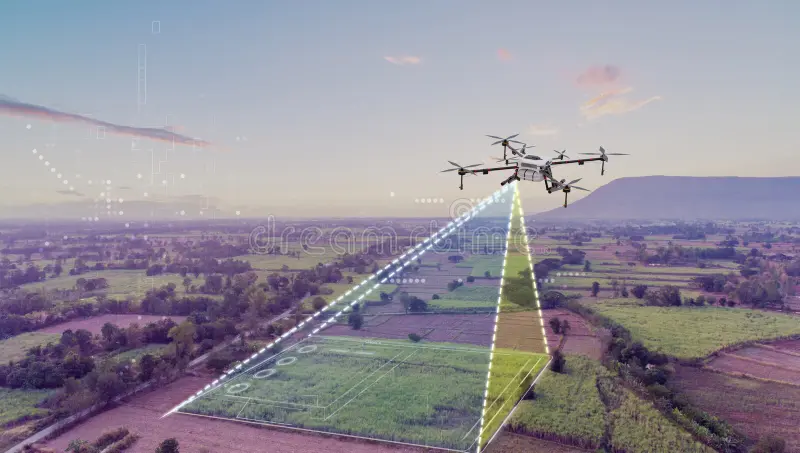Sky-High Innovations: How Drone Surveying is Transforming Construction Projects
In recent years, drone technology features made significant breakthroughs, and its the usage into the construction business have been nothing brief of revolutionary. Eliminated are the days when surveying terrain required extensive personnel and time-consuming processes. Today, drones enable construction professionals for capturing high-resolution images produce accurate maps involving job sites within a fraction of the time this would take employing traditional methods. This particular transformation not just enhances productivity but additionally increases precision, allowing teams to make advised decisions quickly and effectively.
As construction projects become increasingly compound and demanding, the particular benefits of making use of drones for surveying have garnered popular attention. From enhancing accuracy and productivity to offering valuable data analysis in addition to insights, UAV technologies is changing typically the game. On this page, we all will delve directly into how drone surveying is reshaping the particular construction landscape, explore the key apps and benefits, and highlight the considerations that come with adopting this innovative technology. Whether you are a seasoned professional or a novice looking to be able to understand drone surveying better, this extensive overview will provide you with the knowledge you should find their way this exciting frontier.
Advantages of Drone Surveying

Drone surveying offers numerous advantages that substantially enhance construction jobs. One of the key benefits is definitely the ability to collect data swiftly and efficiently. Classic surveying methods may take a considerable amount of period, especially over huge areas. Drones, prepared with high-resolution video cameras and advanced devices, can cover vast areas in a cheaper time, allowing design teams to acquire up-to-date information swiftly. This speed assures that decisions can be made rapidly, which is crucial inside the fast-paced design environment.
Another significant benefit of drone surveying is the increased accuracy and accuracy it provides. Drones utilize GPS technologies and may achieve high amounts of precision inside capturing topographical data. This accuracy converts to improved design and planning procedures, minimizing costly blunders that can arise from inaccurate files. Additionally, the capacity to create in depth 3D models plus topographic maps enhances the understanding regarding the internet site, which is usually invaluable for technical engineers and architects during the design phase.
Eventually, the cost financial savings associated with drone surveying can not be overlooked. Simply by reducing the man-hours necessary for site studies and minimizing the need for costly equipment, construction tasks can significantly decrease their surveying fees. Furthermore, the potential to identify possible issues early throughout the project lifecycle helps prevent costly overruns and holds off. Because of this, the the use of drone technologies into surveying practices not only improves efficiency but furthermore contributes to better financial management of design projects.
Applications of Drone Surveying
Drone surveying is modifying various sectors by providing innovative remedies that enhance productivity and accuracy. One particular of the primary applications is within building, where drones usually are used for internet site mapping, progress traffic monitoring, and volumetric measurement. By using high-resolution soaring imagery and topographical data, project managers can visualize their own sites in actual time and assess ongoing developments without the need for traditional research that often include extensive manual work and time holds off.
Throughout agriculture, drone surveying has taken accurate farming to brand new heights. Farmers work with drones equipped together with multispectral sensors to monitor crop health, assess irrigation devices, and conduct ground analysis. This technology allows for effective resource allocation and even informed decision-making, enabling farmers to increase yield while reducing waste. The capability to gather workable insights instantly tends to make drone surveying a necessary tool in contemporary agricultural practices.
Furthermore, drones are playing some sort of pivotal role inside environmental monitoring and even disaster management. They give critical data for assessing the well being of ecosystems, monitoring wildlife, and handling natural resources. Found in the event associated with a disaster, drones can facilitate fast damage assessments plus aid in healing efforts by delivering up-to-date aerial sights of affected locations. These applications focus on the versatility regarding drone technology and its growing relevance across multiple companies.
Future Trends in Drone Surveying
As technology is constantly on the advance, the capabilities of drone surveying are set in order to evolve significantly. Drone Surveying Gloucestershire emerging trend is the the use of artificial brains and machine mastering into drone businesses. These technologies will improve data running and analysis, enabling drones never to simply collect data yet also interpret it in real moment. This will allow for more proactive decision-making on construction web sites, enhancing project performance and accuracy.
Another encouraging trend is typically the expansion of drone surveying applications throughout various industries. Over and above traditional construction and agriculture, sectors like environmental monitoring in addition to disaster management will be increasingly adopting drone technology. Drones may play a crucial role in evaluating damage after natural disasters, monitoring creatures habitats, and actually assessing environmental impact, leading to more sustainable practices in land use.
Lastly, regulatory innovations will shape the particular future of drone surveying. As governments around the planet formulate clearer rules governing drone use, we can expect increased accessibility for businesses thinking about using this technology. This particular will likely lead to more standardized training programs, guaranteeing that operators are usually well-equipped to leveraging drone capabilities efficiently while adhering in order to safety and legal requirements. The blend of technological developments and regulatory assistance will solidify drones as a central tool in modern day surveying practices.